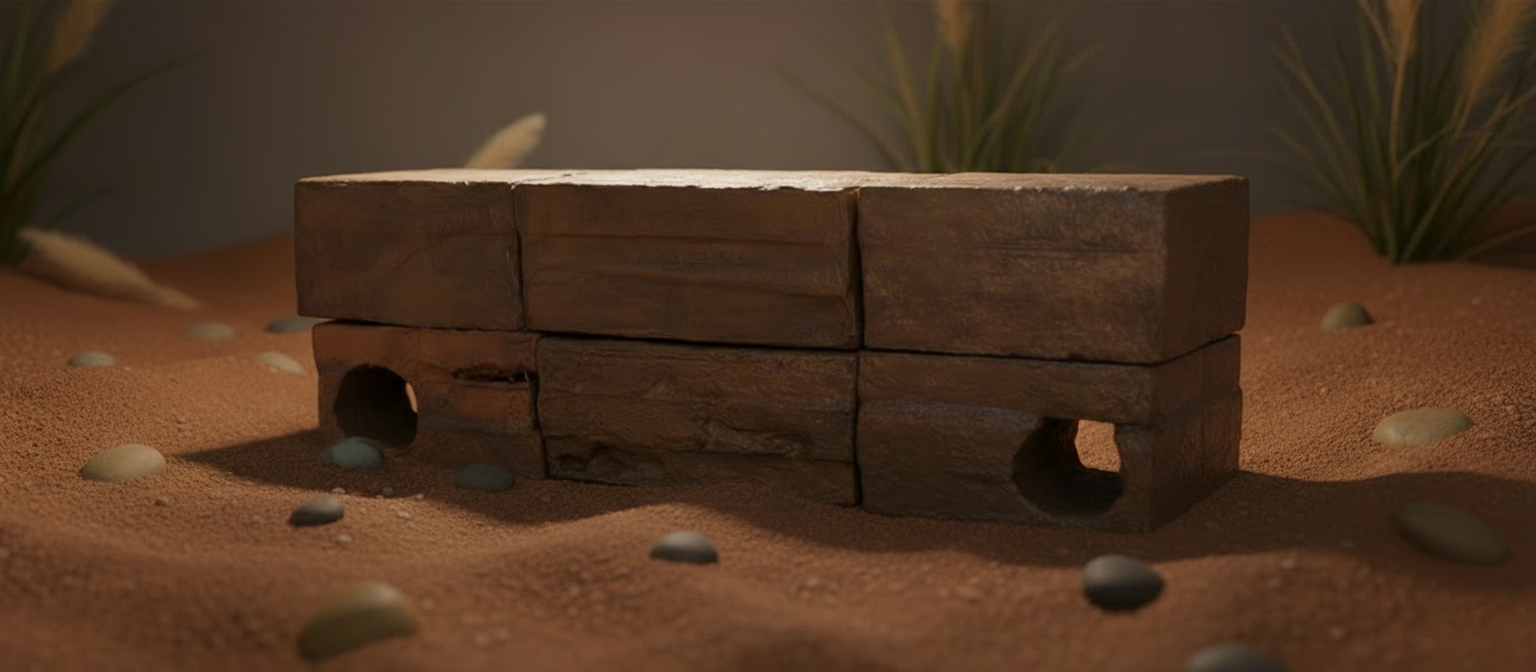


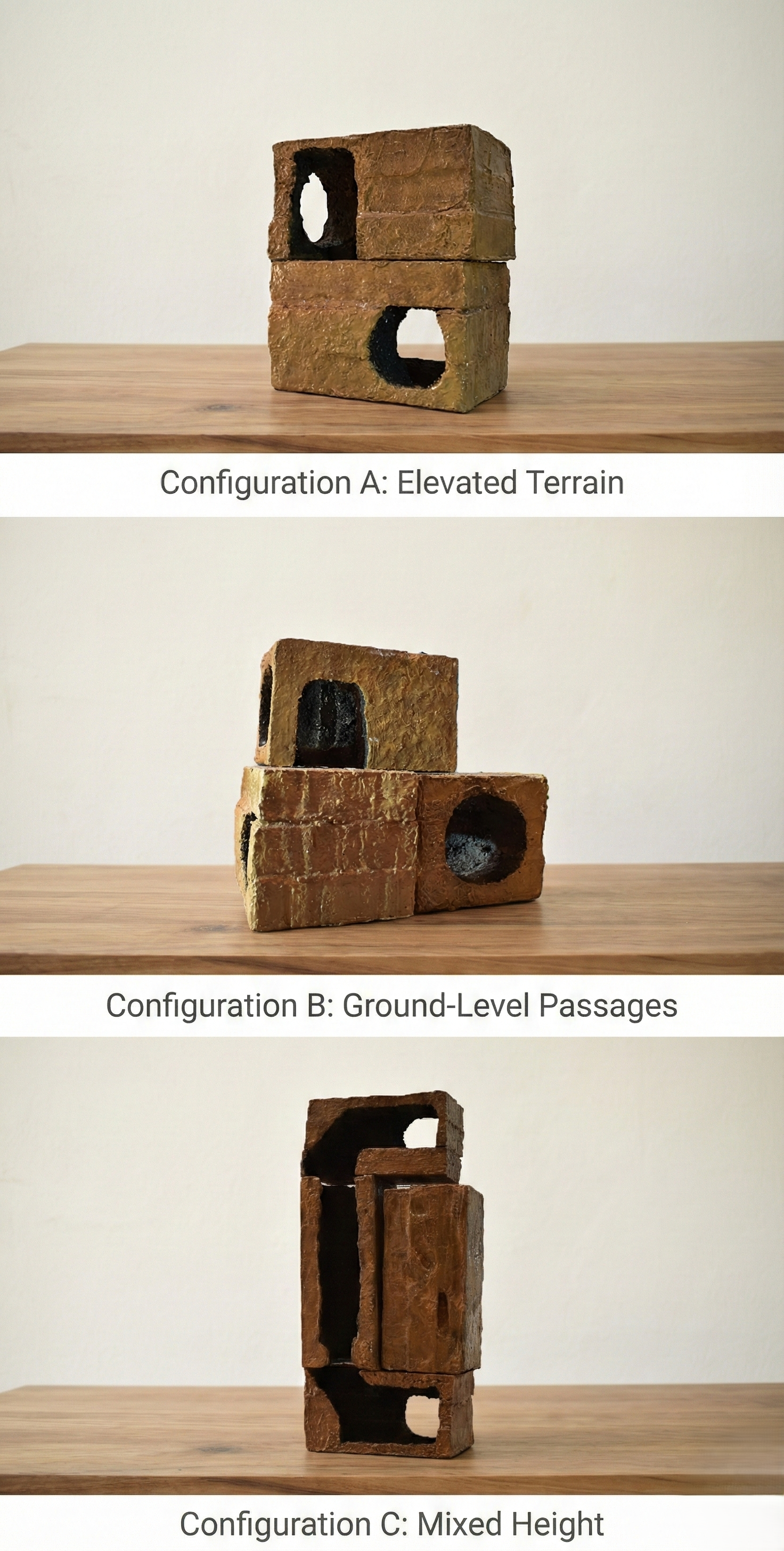
Most pet stores sell plastic caves designed for manufacturing convenience, not animal biology. We studied the rocky deserts where leopard geckos actually evolved.
The Leopard Gecko Rock Set transforms routine habitat care into hands-on earth science. Your family explores volcanic geology, desert climates, and Central Asian geography—all while caring for a living animal that depends on these environmental features for health.
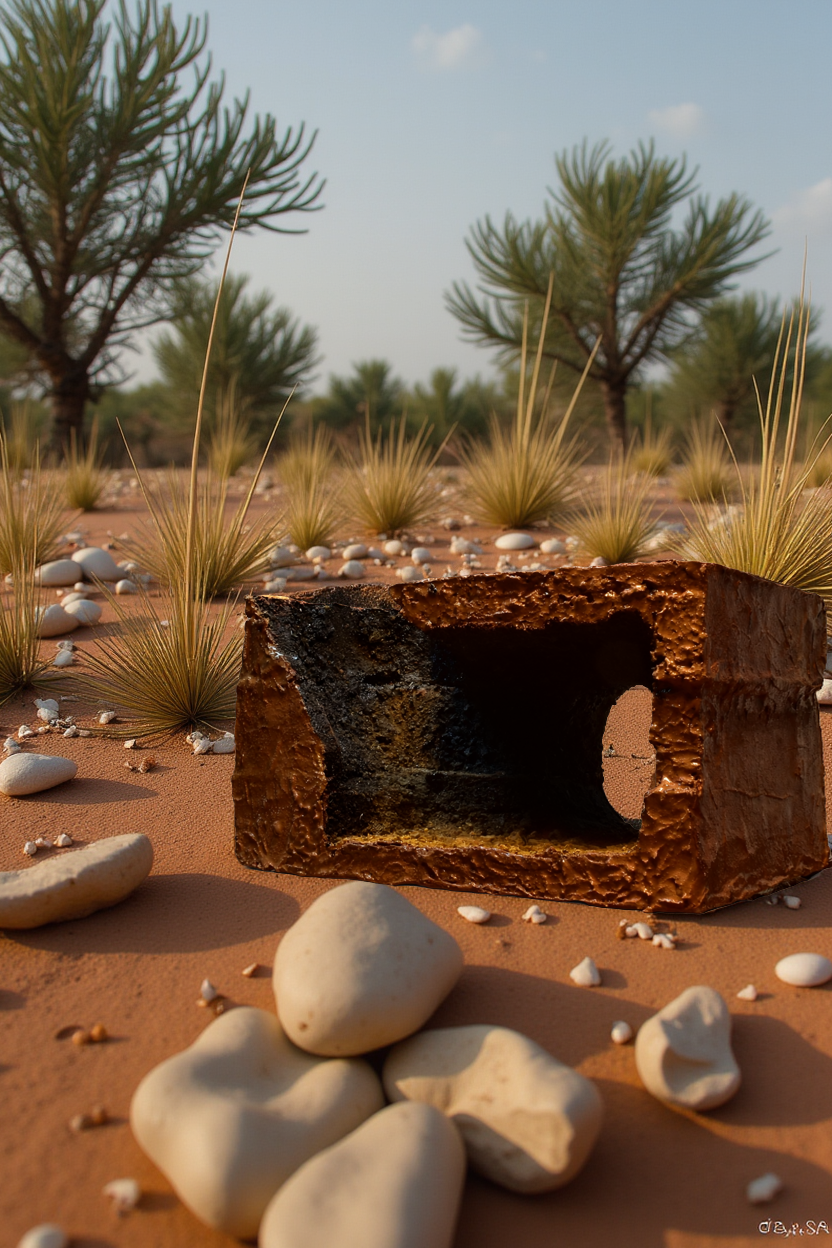
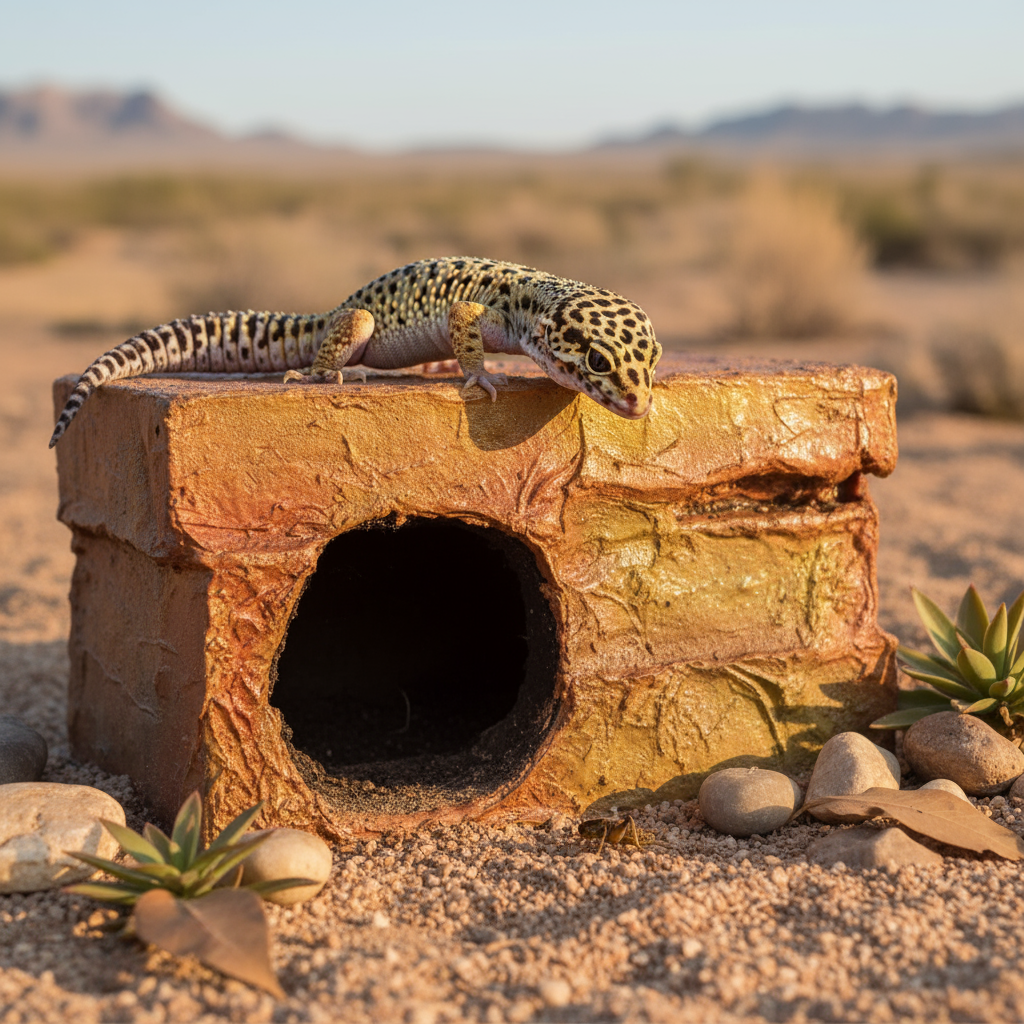

Core Geology Your Child Can Touch
This block houses a three-inch tunnel lined with crushed volcanic basalt. The interior texture isn't decorative—it replicates what wild leopard geckos experience navigating Iranian rock formations.
The rough surface provides two critical functions. First, it naturally maintains nail health through everyday movement. Wild geckos wear their claws on abrasive stone constantly. Captive animals need the same opportunity or they develop overgrown nails that interfere with walking.
Second, the texture supports healthy shedding. Leopard geckos don't shed like snakes (entire skin at once). They shed in pieces, rubbing against rough surfaces to remove old skin. Smooth plastic caves can't provide this assistance. Basalt can.
The tunnel creates genuine darkness and temperature stability. Desert days reach extreme heat. Wild geckos retreat into rock crevices where temperatures stay significantly cooler. This tunnel replicates that thermal refuge.
Your child learns real material science here. Why does volcanic rock stay cool? How does basalt form? What makes certain rocks rough versus smooth? The habitat becomes a hands-on geology lesson.
Specs: 8" L × 5" W × 5" H
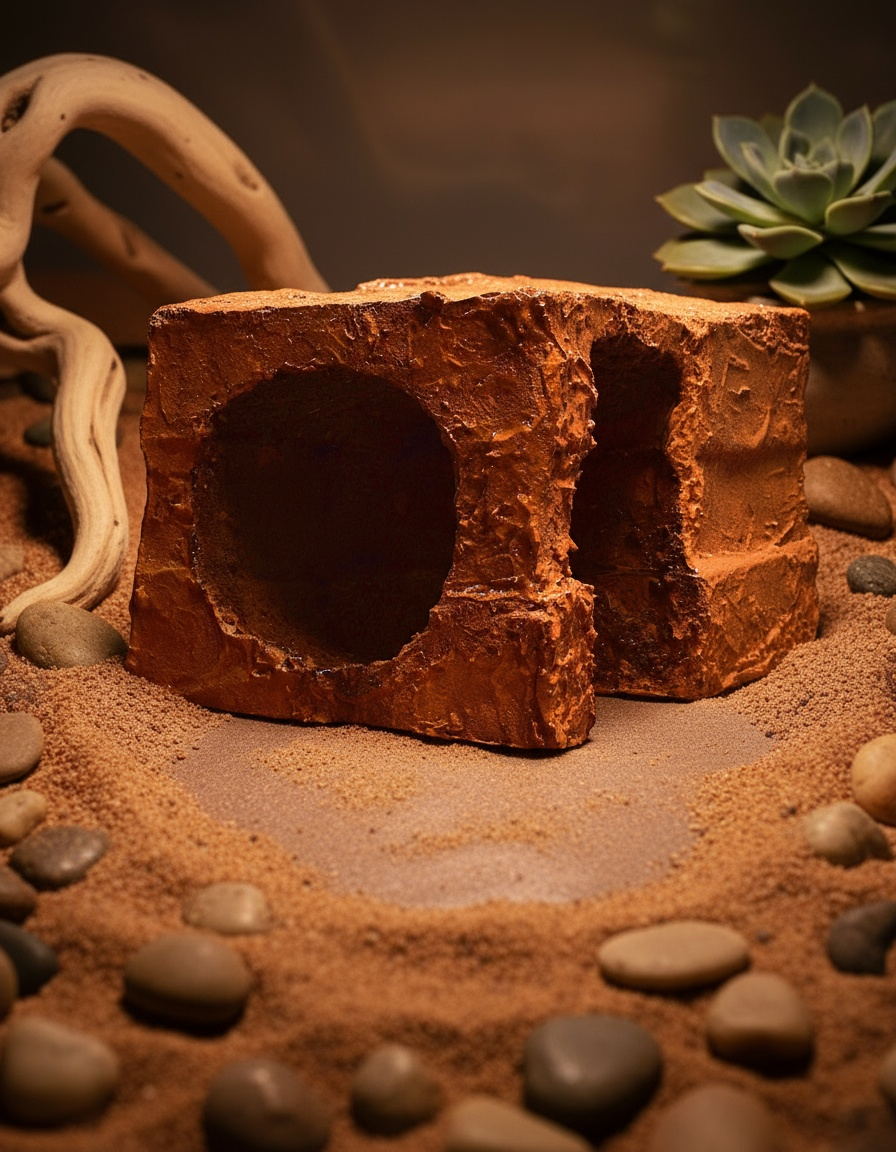

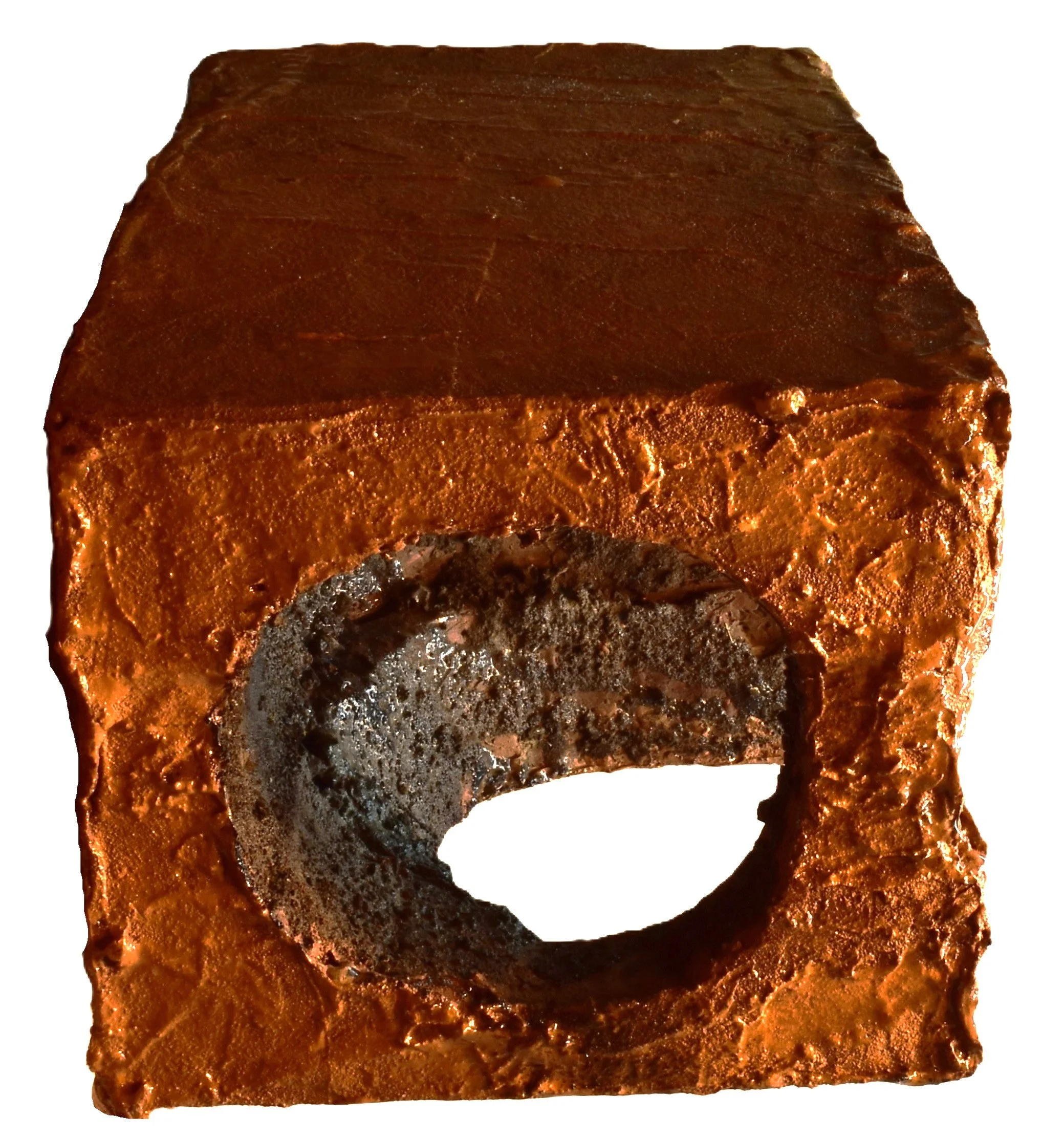
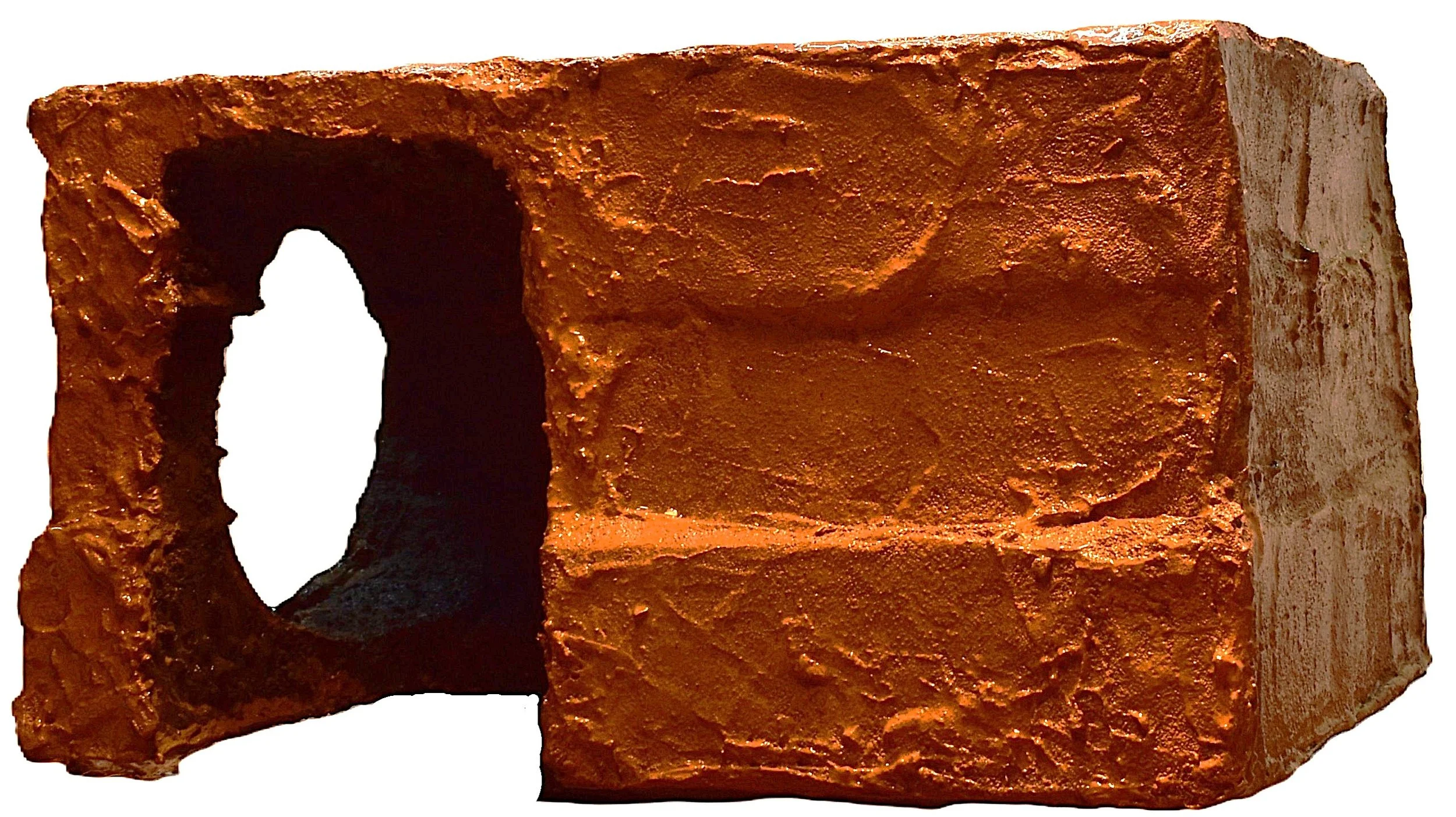
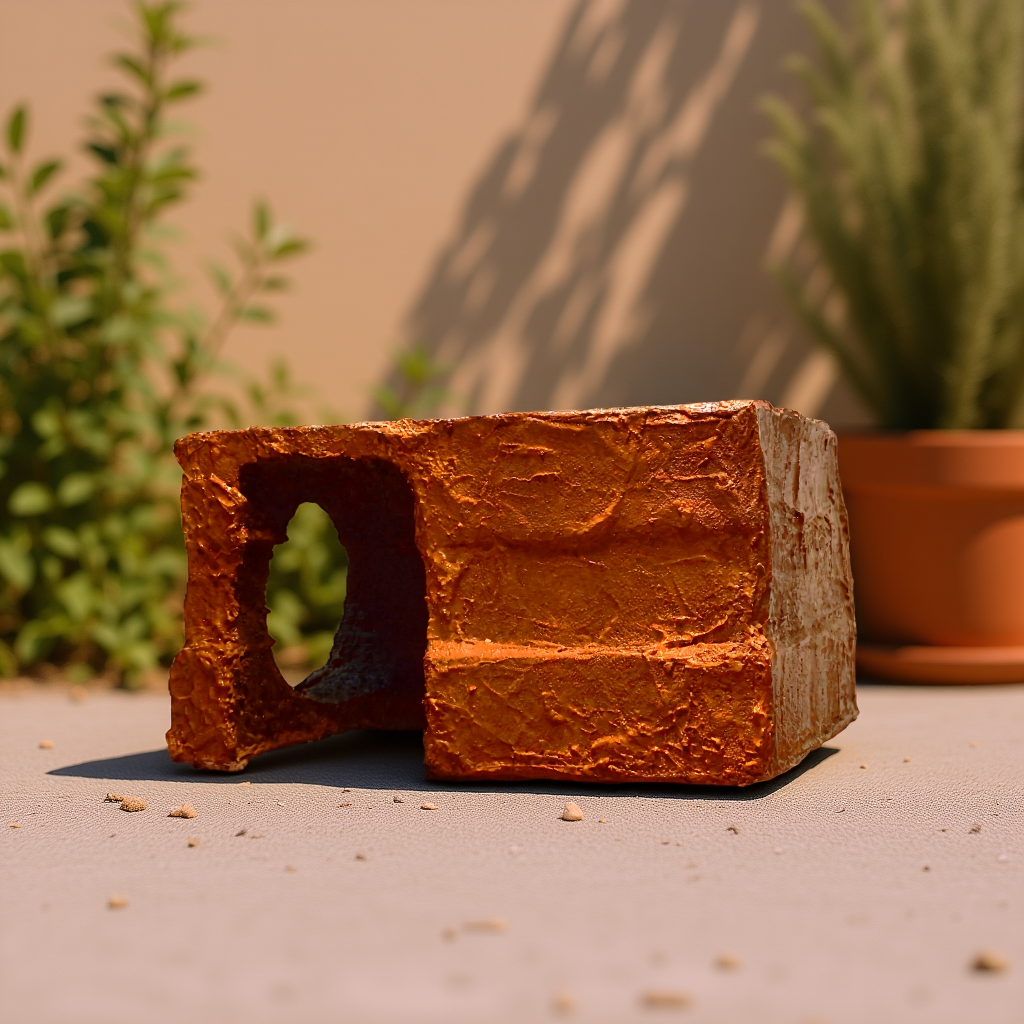
Understanding Dimensional Transition
This block features a tunnel that expands from three inches to four inches. The gradual widening teaches your child about spatial design while serving gecko behavioral needs.
Wild animals navigate varying terrain constantly. Narrow crevices open into wider chambers. Tight passages lead to spacious areas. This dimensional variety reduces territorial stress and encourages natural exploration patterns.
The graduating diameter creates different movement opportunities. Your gecko moves quickly through narrow sections where they feel secure. They pause in wider areas for rest or observation. This behavioral flexibility indicates reduced stress—a sign of proper habitat design.
The basalt texture remains consistent throughout both diameters. Nail maintenance and shedding support continue regardless of passage width. Your child observes how animals use different spaces for different purposes—applied behavioral science.
Think about how playgrounds work. Climbing structures include tight tunnels and open platforms. Kids use each space differently based on their current needs. Animal habitats function the same way.
Specs: 8" L × 5" W × 5" H

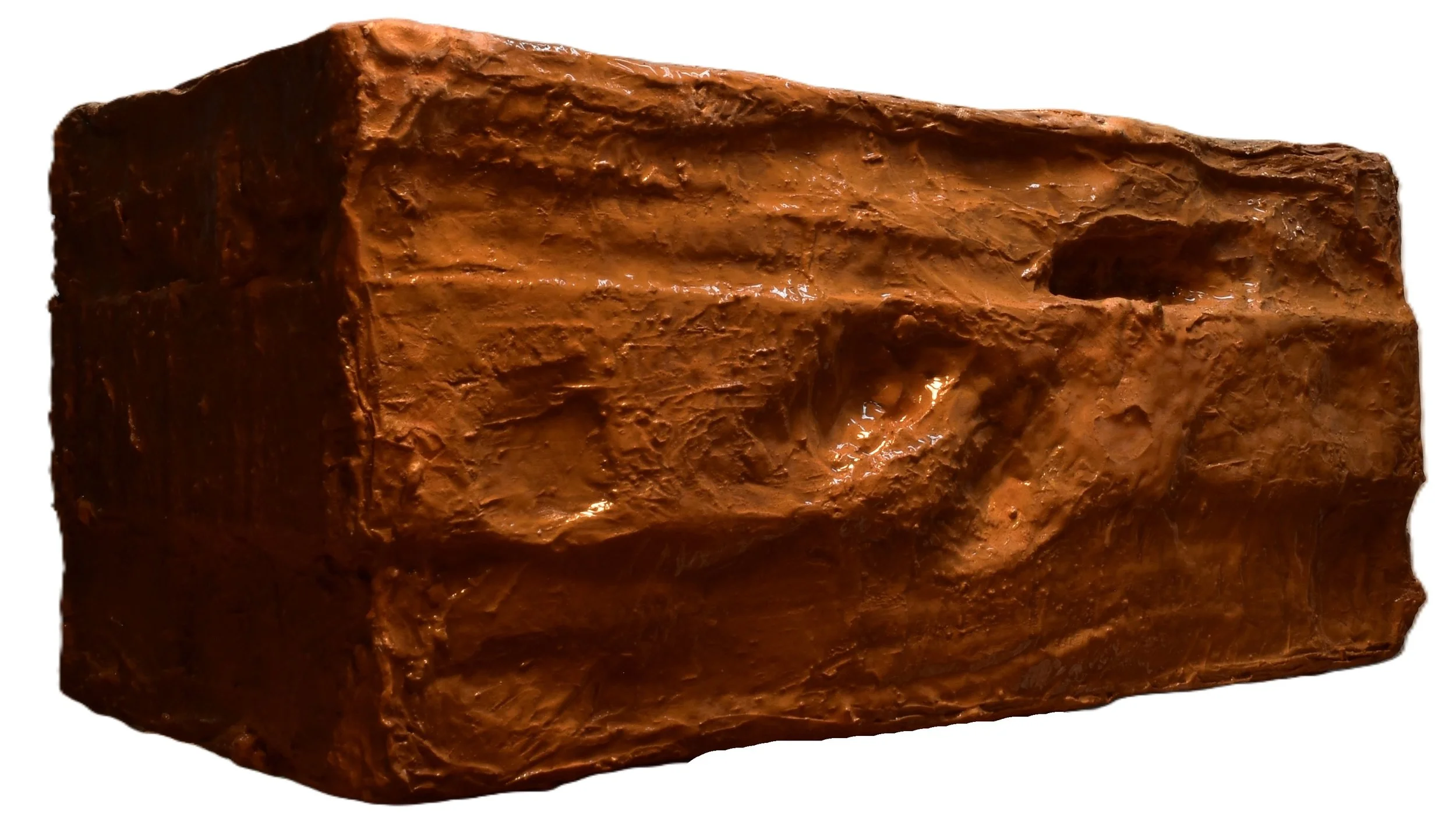



Thermal Mass and Structural Stability
Not all blocks need tunnels. This solid formation provides something equally important for both animal welfare and educational value: exceptional thermal mass and stable basking platforms.
Solid rock formations in desert environments create unique thermal properties. During scorching days, these large stones absorb heat slowly. They release that stored warmth gradually at night when desert temperatures plummet. This creates stable microclimates around the rock formation.
Your gecko can choose their preferred temperature zone. Warmer on top under the heat lamp. Cooler around the shaded sides. Moderate temperature at the base where the block contacts the habitat floor. This is called thermoregulation—animals moving between temperature zones to maintain optimal body function.
The flat top surface offers premium basking space. Rough texture covers all sides for nail maintenance during climbing. The substantial weight provides foundation stability when you stack other blocks on top.
Your child learns practical physics here. Why do heavy objects hold heat longer? How do animals regulate body temperature without internal heating systems? What's the difference between cold-blooded and warm-blooded survival strategies?
This block enables vertical habitat design—creating height variations that encourage natural climbing behaviors while expanding usable territory in limited floor space.
Specs: 10" L × 5" W × 5" H



Spacious Movement for Active Animals
The four-inch tunnel represents this system's most spacious interior corridor. This width matters for specific biological situations—larger individuals, gravid (egg-bearing) females, or particularly active animals that need extra movement freedom.
Not all leopard geckos are the same size. Wild populations show natural size variation based on genetics, nutrition, and environmental conditions. A habitat system should accommodate this biological reality instead of forcing animals into standardized dimensions.
The expanded diameter doesn't compromise functionality. Basalt texture remains throughout. Interior contours create irregular surfaces that challenge climbing instincts and provide mental stimulation. Animals that can navigate complex terrain show better health outcomes than those in barren environments.
Think of this like different room sizes in a house. You need bedrooms for sleeping, kitchens for eating, living rooms for gathering. Animals need varied spaces too—tight refuges for security, open passages for movement, moderate areas for transition.
The larger volume requires superior thermal insulation. Our foam-core construction maintains cool interior temperatures even when this block sits under direct heat lamp exposure. Your gecko gets safe refuge regardless of lamp placement.
Your child observes spatial preference here. Does the gecko spend more time in narrow or wide passages? What does that behavior indicate about their stress level or comfort? You're teaching scientific observation skills.
Specs: 10" L × 5" W × 5" H



This block houses a three-inch tunnel lined with crushed volcanic basalt. The interior texture isn't decorative—it replicates what wild leopard geckos experience navigating Iranian rock formations.
The rough surface provides two critical functions. First, it naturally maintains nail health through everyday movement. Wild geckos wear their claws on abrasive stone constantly. Captive animals need the same opportunity or they develop overgrown nails that interfere with walking.
Second, the texture supports healthy shedding. Leopard geckos don't shed like snakes (entire skin at once). They shed in pieces, rubbing against rough surfaces to remove old skin. Smooth plastic caves can't provide this assistance. Basalt can.
The tunnel creates genuine darkness and temperature stability. Desert days reach extreme heat. Wild geckos retreat into rock crevices where temperatures stay significantly cooler. This tunnel replicates that thermal refuge.
Your child learns real material science here. Why does volcanic rock stay cool? How does basalt form? What makes certain rocks rough versus smooth? The habitat becomes a hands-on geology lesson.
Specs: 8" L × 5" W × 5" H

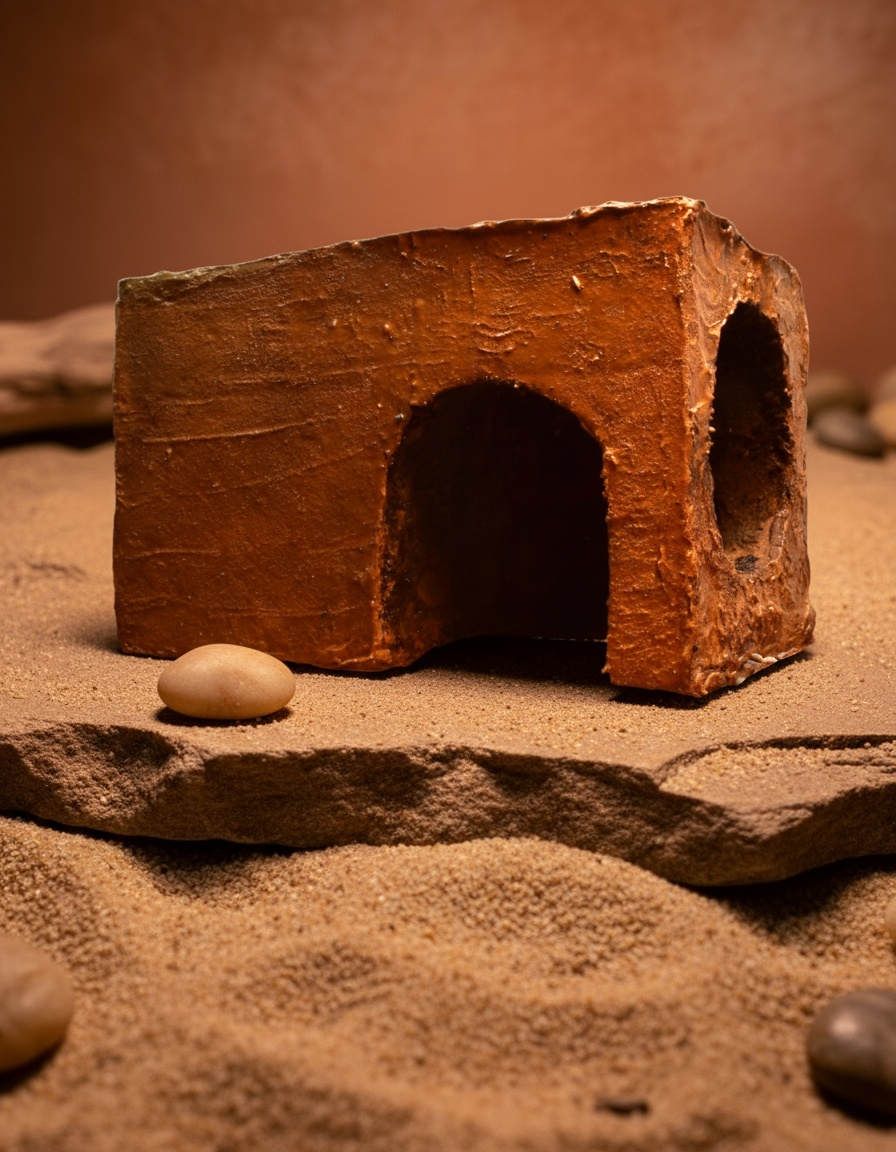


Elevated Terrain and Vertical Space
This block features reverse transition—four inches tapering to three inches. The narrowing passage guides geckos from spacious mid-sections back to standard corridors. Smooth dimensional changes support confident navigation in either direction.
Position this block in elevated configurations. Leopard geckos are semi-arboreal—they naturally seek higher ground for security and territory observation. Wild populations climb rocky outcrops to scan for predators, competitors, or prey. Captive animals retain this instinct.
The tapering tunnel at elevation mimics natural rock crevices found in cliff faces and boulder piles. Desert landscapes aren't flat. They include vertical relief—outcrops, ridges, and elevated stone formations. Your gecko expects access to varied heights.
The thermal challenge increases at elevation because heat rises and this block sits closer to heat lamps. Our insulating core construction prevents internal temperatures from becoming uncomfortably warm. Your gecko gets safe elevated refuge regardless of lamp proximity.
Your child learns applied earth science here. Why do deserts have rocky outcrops? How does erosion create cliff faces? What advantages do elevated positions provide for small animals? You're connecting geology to animal behavior.
The narrow exit at the top creates secure refuge. Animals feel protected in tight spaces when threatened. This upper position with a modest opening replicates the safest wild den sites.
Specs: 8" L × 5" W × 5" H